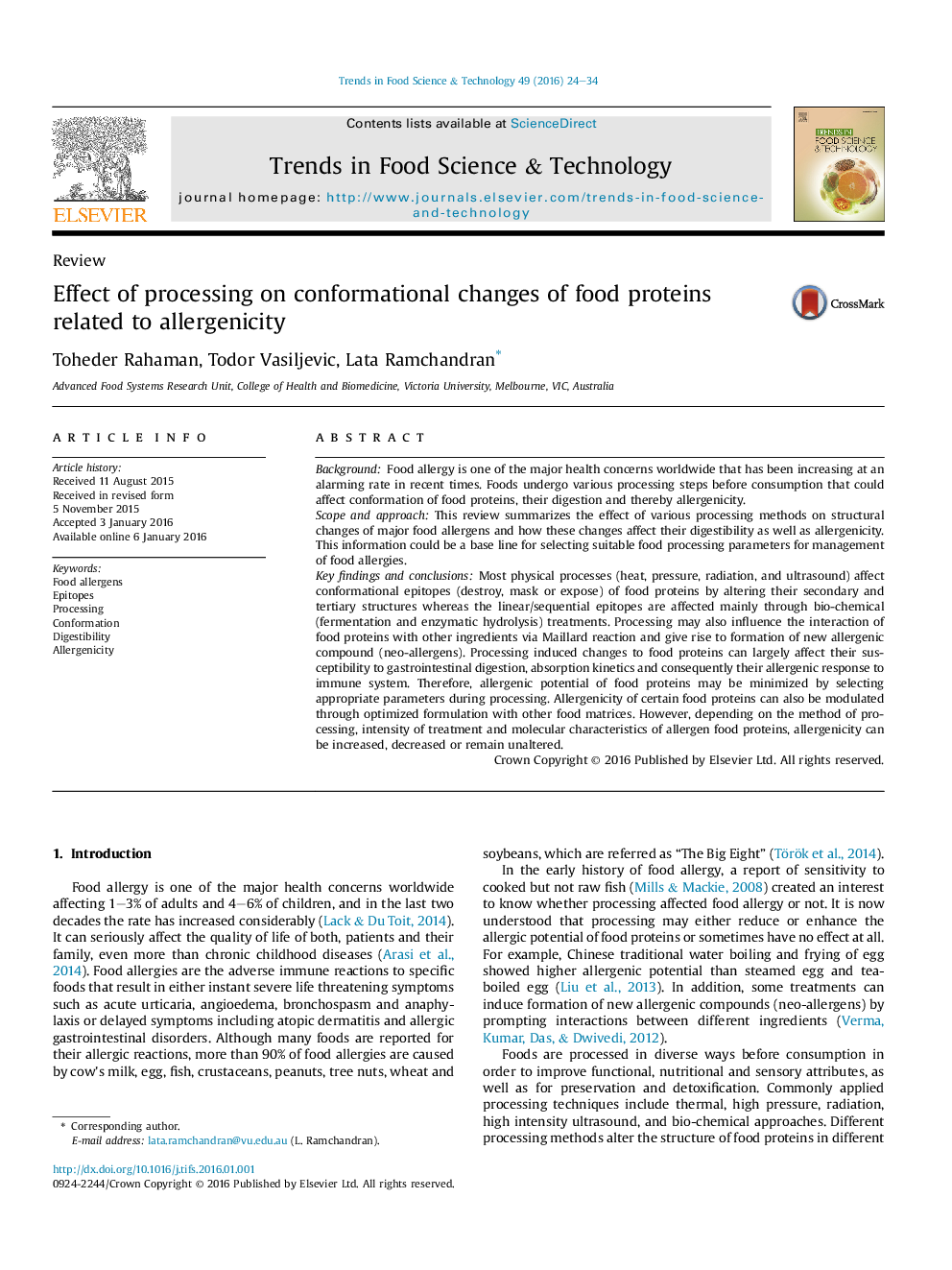| Article ID | Journal | Published Year | Pages | File Type |
|---|---|---|---|---|
| 2099715 | Trends in Food Science & Technology | 2016 | 11 Pages |
•Method & intensity of processing affect conformation, digestibility & allergenicity.•Environment condition and matrix structure in foods also influence allergenicity.•Heat, high pressure, irradiation and ultrasound can alter conformational epitopes.•Linear epitopes can be affected by microbial fermentation and enzymatic hydrolysis.
BackgroundFood allergy is one of the major health concerns worldwide that has been increasing at an alarming rate in recent times. Foods undergo various processing steps before consumption that could affect conformation of food proteins, their digestion and thereby allergenicity.Scope and approachThis review summarizes the effect of various processing methods on structural changes of major food allergens and how these changes affect their digestibility as well as allergenicity. This information could be a base line for selecting suitable food processing parameters for management of food allergies.Key findings and conclusionsMost physical processes (heat, pressure, radiation, and ultrasound) affect conformational epitopes (destroy, mask or expose) of food proteins by altering their secondary and tertiary structures whereas the linear/sequential epitopes are affected mainly through bio-chemical (fermentation and enzymatic hydrolysis) treatments. Processing may also influence the interaction of food proteins with other ingredients via Maillard reaction and give rise to formation of new allergenic compound (neo-allergens). Processing induced changes to food proteins can largely affect their susceptibility to gastrointestinal digestion, absorption kinetics and consequently their allergenic response to immune system. Therefore, allergenic potential of food proteins may be minimized by selecting appropriate parameters during processing. Allergenicity of certain food proteins can also be modulated through optimized formulation with other food matrices. However, depending on the method of processing, intensity of treatment and molecular characteristics of allergen food proteins, allergenicity can be increased, decreased or remain unaltered.
